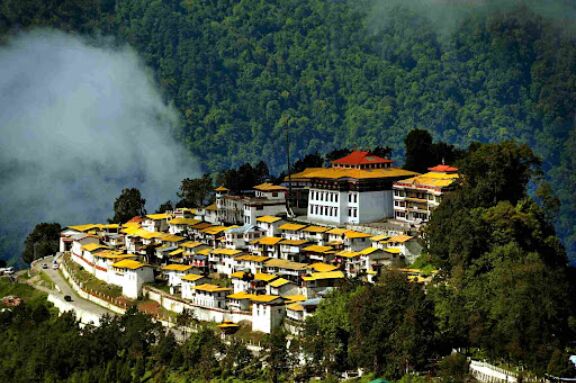A bumpy path to statehood
The sophisticated road to the formation of Manipur state in 1972 had been made challenging on account of faulty interpretation of the Indian Independence Act and multi-layered internecine conflict among tribals

Although Manipur did not see an ingress of refugees from East Pakistan, its problems lay in the interpretation of the Indian Independence Act by the Maharaja and the Manipur Durbar. A few days before Independence, Maharaja Bodhachandra Singh signed the Instrument of Accession in the same format as was done by the 560 odd princely states. This was followed up by the formulation of the Manipur State Constitution Act 1947, and elections based on universal adult franchise were held in Manipur in June 1948. However, the Manipur State Constitution Act 1947 was not recognized by the Government of India, and as such the elections were 'void' from the perspective of the Ministry of States. The Centre's view was that the Instrument of Accession should be followed by an Agreement of Merger so that all Indian citizens – irrespective of whether they were living in British India, or in the princely states — had the same rights and privileges. Whether or not, the Maharaja was authorised to sign the merger agreement after the passage of the above Act is a contested issue. The allegations that the Treaty was signed under duress dominated the political discourse till Manipur made the final transition from a Part C state (Chief Commissioner's province) to a UT and finally to a state in 1972.
However, this was not the most contentious issue for Manipur. The real challenge lay in the internecine conflict among the three major ethnic groups: the Meities, the Kukis and the Nagas. While the Meities, who were also the ruling clan, dominated the Imphal valley, the hills were controlled by the Kukis and the Nagas — both in longstanding and violent conflict with each other as well as with the Meities. The Kukis and Nagas had their distinct systems of land management and governance. While Naga lands were held by the community, Kukis were oriented towards a hereditary chiefship. As if this was not enough, the ethnoreligious group of Meithei Muslims, called Pangals or Pangams, was also engaged in violent assertions of identity.
Manipur was one state where every ethnic group had its own militia, and at some point in time had engaged in guerrilla warfare with each other, as well as with security forces. The groups splintered and proliferated, both on ideological and personality factors, but in general, the Meithei insurgents sought independence from India, Kukis wanted a separate state and Nagas wished to merge with Greater Nagaland or Nagalim, which was in sharp conflict with Meithei insistence on the territorial integrity of their state. One must acknowledge that Manipur was also home to Rani Gaindinilu who led the resistance movement of the Heraka cult in the 1930s among the Zeliangrong tribes: Kabui, Puimeis, Zemi and Liangmeis against the British, as well as against the missionaries, whom she felt were destroying their traditional belief systems. Arrested at the tender age of seventeen, she was released after 1947, and was opposed to Phizo's struggle for Naga independence. She received the Tamar Patra for freedom fighters in 1972, and the Padma Bhushan in 1982, but is now a forgotten figure as many of her own kinsmen are now Christians, and the movement for the revival of Heraka is now liminal. Another hero from Manipur, whose contribution to the determination of India's borders is unparalleled is Major Ralengnao (Bob) Khathing who, with the blessings of Jairamdas Daulatram, the then Governor of Assam, had led the contingent of Assam Rifles to Tawang in 1952, and directed that the Lamas refrain from sending their ritual tribute to Lhasa. Iqbal Malhotra has pointed out that while Nehru was 'miffed' with Governor Daulatram for having authorized this action, this action was part of the recommendation of the Deputy Defence Minister Maj Gen Himmatsinhji report. The Himmatsinhji Committee submitted its report in two parts in April and September 1951. Following the committee's recommendation, the government sought to extend administrative cover into remote tribal areas of NEFA and introduce economic and welfare measures. A road-building programme was initiated and check posts were established close to the frontier. The committee also seems to have suggested that in the sectors where the boundary was undefined, India should decide its claims, if only as a basis for negotiation. After having decided on its claim line, effective steps should be taken to prevent the unilateral occupation of these areas by Chinese or Tibetans. In disputed areas, armed police might have to be stationed to prevent infiltration or intrusion, the committee said. As such Governor Daulatram, his advisor Rustamji and Major Khathing had the last laugh when Governor Daulatram reportedly told Nehru that he was merely following the path laid out by the Himmatsinhji Committee. Thus, it was Tawang where the Dalai Lama made his first halt in 1959 during his escape to India. Khathing was also the Deputy Commissioner of Mokokchung when the Naga conventions were held in1956 and 1959 to renounce violence and accept statehood within the Indian Union. He rose to be the Chief Secretary of Nagaland, and later became our Ambassador to Burma, as Myanmar was then known. He was also accorded the honour of the Padma Shri in 1957!
Views expressed are personal



